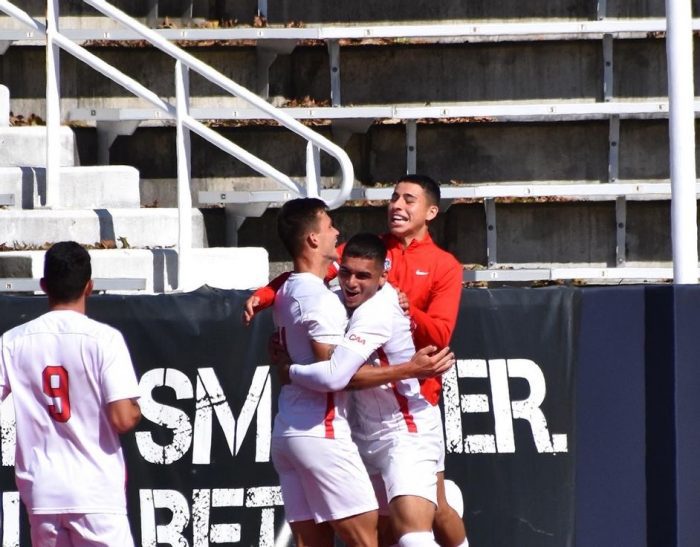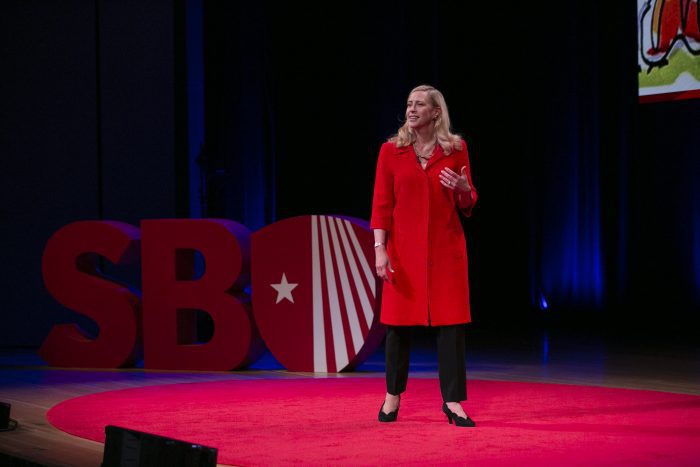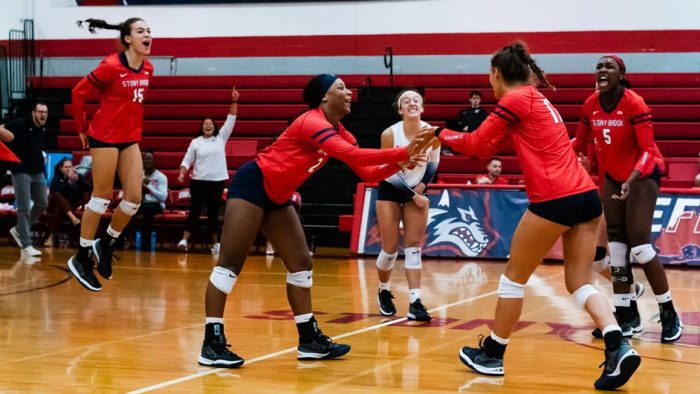Stony Brook University has welcomed a trio of new leaders to its campus over the last several months. Provost Carl Lejuez, Vice President for Marketing and Communications William Warren, and Senior Vice President for Finance and Administration Jed Shivers recently shared their goals for Stony Brook and their excitement at joining a flagship university for the State University of New York educational system.
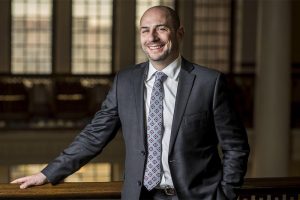
Provost Lejuez
As provost, Carl Lejuez is responsible for the faculty, staff and students at Stony Brook University.
Lejuez, who has asked that people call him by his first name instead of trying to pronounce his last name — which, by the way, is Lejh way— makes a concerted effort to forge connections on campus.
“Whenever I introduce myself, I don’t say, ‘Provost,’” he said. “I say, ‘Professor in the Department of Psychology.’ I don’t believe I can be a credible leader of the faculty if there’s not a sense of sitting in their shoes and understanding the implications of the strategic and practical decisions we make.”
Lejuez, who grew up in Secaucus, New Jersey, earned his bachelor’s degree in psychology from Emory University and his Master of Arts and PhD in clinical psychology from the University of West Virginia.
As a first-generation college student, Lejuez feels inspired by the opportunity for students to come through a place with world-class research in an environment that cares about student success.
For first-generation students, in particular, he recognizes the need to forge connections with professors.
These close bonds help “take what’s happening in the classroom, which may be esoteric knowledge, and turn it into a passion and understanding,” providing students with the opportunity to see how what they’re learning in a textbook applies to the world.
He wants to expand the scope and reach of these hands-on experiences for students, while recognizing “how much goes into it from faculty and staff,” he said.
Lejuez believes the ability of professors to conduct extraordinary and groundbreaking research should dovetail with their commitment to being accomplished educators.
“We are setting the expectation from the start,” he said. “When you are tenured here, when you are progressing and doing well, you are excellent in both research and teaching.”
Stony Brook has a Center for Excellence in Learning and Teaching that provides support for professors who may need polishing or improvement in inspiring and educating students.
Stony Brook looks closely at student evaluations, while also examining other data in assessing its teachers.
Lejuez, who recently served as provost and executive vice president for academic affairs at the University of Connecticut, supports strong and growing areas for the university, including clinical psychology, quantum information systems, and climate science, among others.
“These are areas that Stony Brook has a real opportunity to develop and part of my role has been thinking about how do we identify incredibly strong areas and areas that are able to emerge that way and fuse it with growing fields,” he said.
Lejuez believes in academic excellence and in diversity and equity.
He hopes to broaden the range of countries and regions from which the university is recruiting students and faculty.
Lejuez describes Stony Brook as “one of the best kept secrets of public universities,” ranking first in the state in public schools, according to the 2022-2023 US News and World Report ranking.
“Our goal is now to remove the best kept secret part,” Lejuez said.

Raising SBU’s profile
This is where William Warren, vice president for Marketing and Communications, comes in.
Warren has worked in numerous corporate and academic jobs, including most recently as the chief marketing and communications officer at the University of Utah.
Warren hopes to raise “the profile of Stony Brook and really claim the sort of credit and attention this institution deserves,” he said.
Previously at Coca Cola, among others, Warren welcomes the opportunity to support Stony Brook.
“You want a challenge that’s exciting and doable,” he said. “That means having a fabulous thing to market that is possibly undervalued.”
Warren divides marketing into earned and paid media. For the former, he hopes to do the hard work of building relationships with national reporters, who can spread the word about the achievements and experts available at Stony Brook.
Warren plans to continue to work with regional and local reporters, while engaging in an ongoing effort to share the Stony Brook story, including publicizing initiatives such as the Simons Stem Scholars Program that supports minority students entering the scientific fields.
As for the paid piece, Warren sees opportunities in several dimensions.
“The great thing about the paid marketing campaign is that it’s adaptable to all kinds of purposes,” he said. “Student recruitment can use the campaign to get the right students. We can use the campaign to help us recruit great faculty.” It can also be adapted to “attract more donor support.”
Any marketing effort, however, needs to remain grounded in truth.
“You want to go out there with a message that resonates and that faculty will see and say, ‘That’s what we offer,’” Warren said. “We are not blowing smoke.”
A marketing campaign includes a host of elements, such as the best execution and photography that supports the message.
An evolved campaign could include a new slogan for the school.
The “Coke is it” campaign reinforces the idea of authenticity, as consumers can be sure it is “exactly what you think it is,” Warren said. “It never disappoints. It’s always consistent and is part of the American culture.”
In developing a slogan for Stony Brook, which Warren said is less important than the message behind it, he wants to hone in on the handful of characteristics that capture the personality of the university.
In reflecting on the differences between commercial and academic marketing, Warren noticed that academics tend to be more skeptical.
“You have to work to make them allies,” he said.
Outside of his marketing role, Warren, who had initially pursued a PhD in history at Rice University, shared an interest in teaching. At the University of Utah, he taught an American economic history class and, at some point, would also consider teaching at Stony Brook.
Since arriving on Long Island, Warren has enjoyed kayaking. He is also a former violinist and enjoys the opportunity to relax with music.
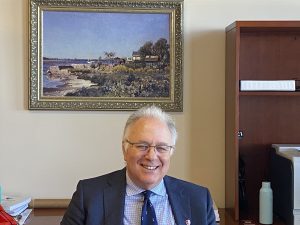 A return to the Northeast
A return to the Northeast
After over four years as vice president for finance and operations/ chief operating officer at the University of North Dakota, Jed Shivers is returning to the Northeast, which is similar to the cultural and environmental feel of his childhood home in Storrs, Connecticut.
Shivers, who is senior vice president for finance and administration at Stony Brook, enjoys walking through the quad and in wooded areas around campus.
After living in the plains, which has “its own beauty,” Shivers appreciates the SB campus, which has “more trees,” and includes a view of the fall foliage outside his office window in the Administration Building.
Ready to embrace the opportunities and challenges of his job, Shivers said the university community is preparing a strategic plan for the next five years or so, which he will follow with a campus master plan.
In preparing for that plan, he is working with a firm that will survey all research space on campus and determine its current functional use, occupants and intensity of use.
He is also focusing on facilities that assist with the delivery of education and is hoping to conduct a similar survey of educational spaces.
To provide managers and executives with actionable financial information, the university is also engaged in a process to improve its business systems in human resources, budgeting, accounting and financial management.
With a “ high rate of system failures around campus” creating a “significant problem” for the university, the building and infrastructure at Stony Brook are all aging at the same time, Shivers said.
Campus Planning, Design and Construction and Campus Operations and Maintenance work constantly to deal with these issues and fix problems as quickly as they can, Shivers added.
The immediate need for deferred maintenance issues is over $1.5 billion, which dwarfs any campus close to comparable size in the SUNY system.
The SUNY Construction Fund and SUNY leadership has provided funds to alleviate a small but substantial part of those critical issues, he said. The university is also engaged in conversations with the Construction Fund and the Division of Budget on ways to use funds for optimal results.
Shivers was delighted for the chance to “get into a place where president [Maurie Mcinnis] was forming her team,” he said. He saw this opportunity as a chance to be a part of leadership “on a ground floor-ish kind of a way.”
He embraces the challenge of working through the SUNY system.
Consistent with mandates from McInnis since her arrival, Shivers would like to create a consolidated financial statement for Stony Brook and all its affiliated entities.
In addition to enjoying his strolls through the quad, Shivers has appreciated the opportunity to join other sports and school enthusiasts in supporting college teams and cultural life on campus. He and his wife Sandee have been married for almost 30 years.
Outside of work, Shivers said he does “everything badly,” but is enthusiastic about it. That includes golf, tennis, skiing and bike riding. To get in shape for the 100-mile North Fork ride, which he’s never done, he has started riding his indoor bike close to five days per week.




